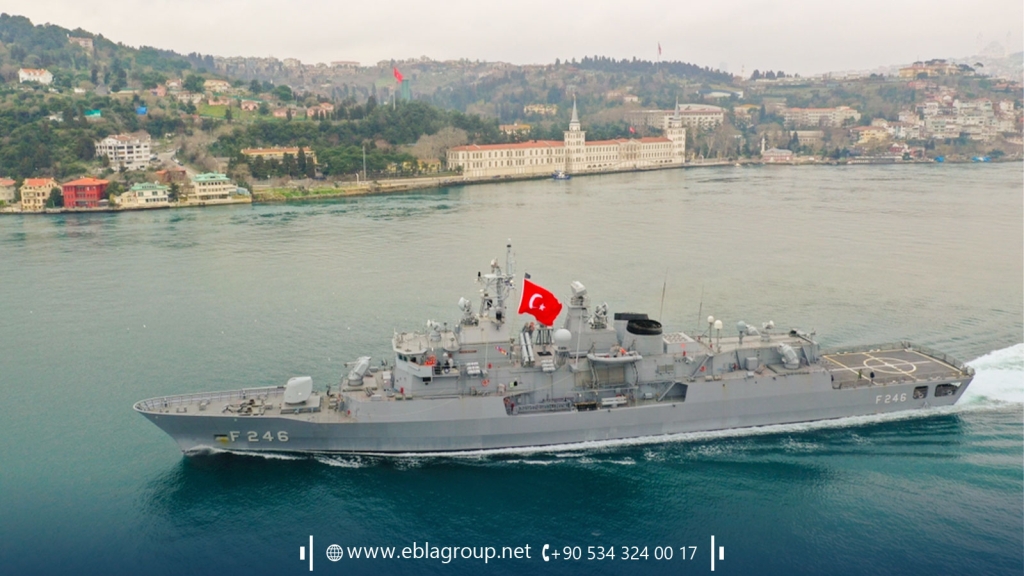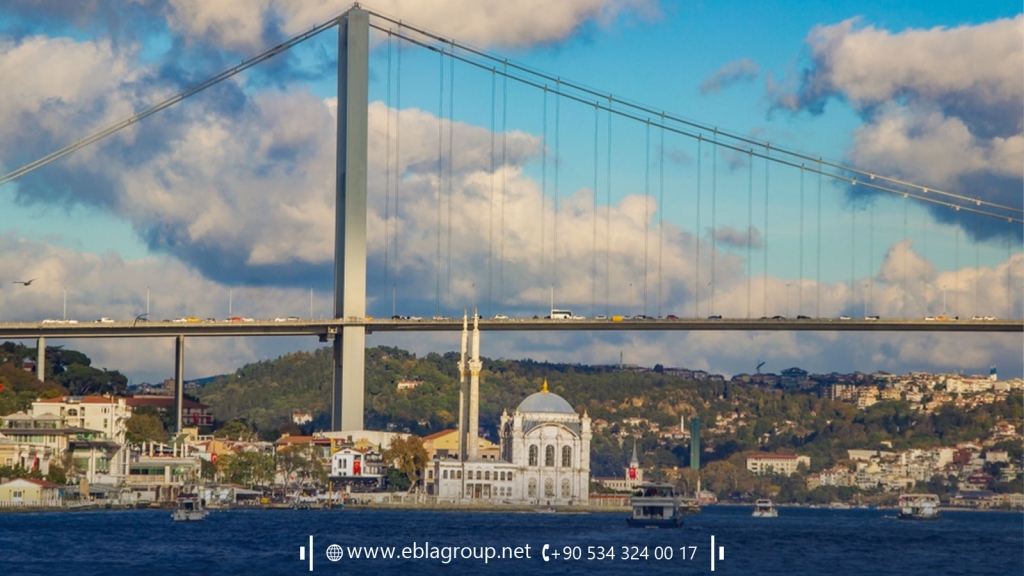Straits in Turkey
Straits have always held a special place in human history, acting as both natural wonders and crucial passageways for trade and transportation. In Turkey, the nexus of Europe and Asia, lies a unique network of straits that have played a pivotal role in shaping the region’s cultural, economic, and geopolitical landscapes. In this article from Ebla Real Estate. we will talk about straits in Turkey.

Straits in Turkey:
Straits are narrow water passages connecting two larger bodies of water, often separating land masses or connecting larger bodies of water. Turkey boasts several straits, but two stand out as the most prominent: the Bosphorus Strait and the Dardanelles Strait.
Straits in Turkey represent some of the world’s most strategically positioned waterways. Located at the crossroads of Europe and Asia, they serve as crucial maritime links between the Black Sea and the Mediterranean, facilitating global trade and transportation.
The Importance of Straits in Turkey:
Straits in Turkey serve as main trading routes linking the Black Sea riparian countries to the world markets.
A significant portion of global trade passes through Turkey’s straits, including oil and natural gas shipments, making them essential for the global economy.
Moreover, these straits have been integral to the history and culture of Turkey for millennia. Istanbul, the largest city in Turkey, straddles the Bosphorus Strait and holds immense cultural and historical significance as a bridge between Europe and Asia.
Furthermore, the Bosphorus and Dardanelles Straits have been of paramount importance in military strategy throughout history.
Additionally, the scenic beauty of these straits and their historical sites attract tourists from around the world.
In summary, the straits in Turkey, notably the Bosphorus and Dardanelles, are critical crossroads with multifaceted importance. They are not only pivotal for global trade and energy transit. They also for the geopolitical balance of power, cultural heritage, and environmental conservation.

Bosphorus Strait:
The Bosphorus Strait, also known as the Istanbul Strait, is one of the most famous and strategically important waterways in the world. It serves as a natural link between the Black Sea and the Sea of Marmara.. Effectively separating the European and Asian sides of Istanbul, Turkey’s largest city.
The Bosphorus Strait extends for approximately 19 miles (30 kilometers). It varies in width from about 700 meters to 3.7 kilometers. The depth ranges from 36 to 124 meters.
It runs in a generally north-south direction and connects the Black Sea to the Sea of Marmara. It, in turn, is connected to the Mediterranean Sea.
The Bosphorus serves as a critical trade route, facilitating the movement of goods between the Black Sea and the Mediterranean Sea. This has made Istanbul a major trading city for centuries.
The Bosphorus is home to several ports and harbors, which are essential for commercial shipping, tourism, and fishing activities.
Istanbul has developed a comprehensive transportation network around the Bosphorus, including bridges and tunnels, to alleviate traffic congestion and enhance connectivity between the European and Asian sides.
The Bosphorus is a major tourist attraction, with numerous boat tours and cruises offering breathtaking views of the Strait and its iconic landmarks, including the Bosphorus Bridge and the Dolmabahçe Palace.

The Dardanelles Strait:
The Dardanelles Strait, also known historically as the Hellespont, is another strategically significant waterway in Turkey. Moreover, it connects the Aegean Sea to the Sea of Marmara and, in turn, provides access to the Black Sea.
The Dardanelles extends approximately 38 miles (61 kilometers). Furthermore, it varies in width from about 1.2 kilometers to 6 kilometers. The depth ranges from 55 to 103 meters.
It runs in a generally northwest-southeast direction.. Separating the Gallipoli Peninsula in the European part of Turkey from the Asian side of Turkey.
The Dardanelles serves as a vital trade route.. Allowing ships to access the Black Sea, which is home to several countries with significant maritime trade.
Both sides of the Dardanelles are home to ports and harbors, which facilitate commerce, fishing, and tourism.
The Dardanelles is a popular tourist destination, attracting visitors to its historical sites, including World War I memorials and archaeological remains. The region surrounding the Dardanelles has a rich cultural heritage.. With historical sites and museums that provide insights into its significance throughout history.
Thus, we talked about straits in Turkey.
Edited by: Ebla Group Real Estate
If you like the topic, do not forget to share it with your friends.



